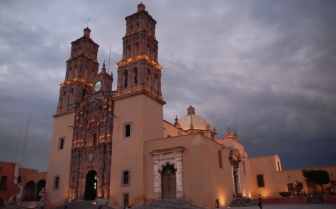Independence Route, a nostalgic journey with a lot of history
News Category: News and General Discussion
-
According to Mexican history, the state of Guanajuato became the main stage where the struggle for the Independence of Mexico took place in 1810, several of its municipalities were traveled by the insurgents in search of the country’s freedom, and on this 212th anniversary of the struggle, remembering those times and taking a tour through the Route of Independence is a great option.
Dolores Hidalgo
In the early morning of September 16, 1810, in the municipality of Dolores Hidalgo, the priest Miguel Hidalgo y Costilla called the people to rise in arms and fight for the independence of the country from the atrium of the parish of Our Lady of Dolores.Today Dolores Hidalgo is a picturesque Pueblo Magico, called the Cradle of Independence. Its official name is Dolores Hidalgo C.I.N. Visit the parish and sees the plaque that marks the point from which the priest Miguel Hidalgo gave the Grito.
To learn a little more about the history, visit the Museum of Independence while tasting traditional exotic snow such as avocado, chicharron, ceviche, and many more.
San Miguel de Allende
In Dolores, the first General Staff of the Insurgent Army was formed in the Hacienda de Erre. With this battalion, the priest left for San Miguel de Allende, specifically to the Sanctuary of Atotonilco, and motivated his troops with the first insurgent flag, the image of the Virgin of Guadalupe. It was precisely in San Miguel de Allende, where Hidalgo and Ignacio Allende created the first free City Hall of Mexico.Currently, the Sanctuary of Atotonilco is known as the Mexican Sistine Chapel, thanks to its 17th-century murals, elements for which it was declared a World Heritage Site by UNESCO.
Celaya
The Independence Route continued in Celaya, by September 21, 1810, the independence squads not only entered without any resistance to the municipality accompanied by the priest Miguel Hidalgo, but they received all the support of the people of Celaya, increasing their troops considerably. At this point, the priest was named Captain General of the Insurgent Army and Ignacio Allende as Lieutenant General.Here you can see the impressive murals found in the Municipal Presidency, the Temple and Convent of San Francisco, the Temple of Carmen, and the portals of the Plaza de Armas. You can’t leave without tasting the traditional and sweet cajeta de Celaya.
Irapuato and Guanajuato capital city
Afterward, the troops headed to Irapuato to recruit more insurgents, taking the road to the capital with them. Visit the Casona de Iturbide, the Templo del Hospitalito, and the famous Identity mural inside the Presidencia Municipal. You can also harvest your strawberries and taste all the products made from this delicious fruit.The tour culminated in the capital of Guanajuato, Hidalgo and his troops arrived on September 28, 1810, the date on which a battle was unleashed against the Spaniards. History tells us that this happened after a miner known as “el Pípila” burned the door of the Alhóndiga de Granaditas, and the few remaining Spaniards opted to surrender.
Walk through the alleys, squares, tunnels, and emblematic points that distinguish Guanajuato Capital, declared a World Heritage City by UNESCO, such as the Museum of the Alhóndiga de Granaditas, or the iconic viewpoint of the city, where the monument in honor of the Pípila is located.
This journey through the various municipalities of Guanajuato will give you a feeling of nostalgia and learning that only trips of this kind can achieve.
-


Leave a Reply